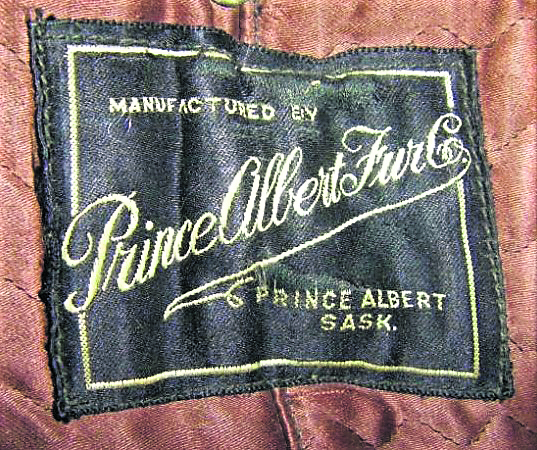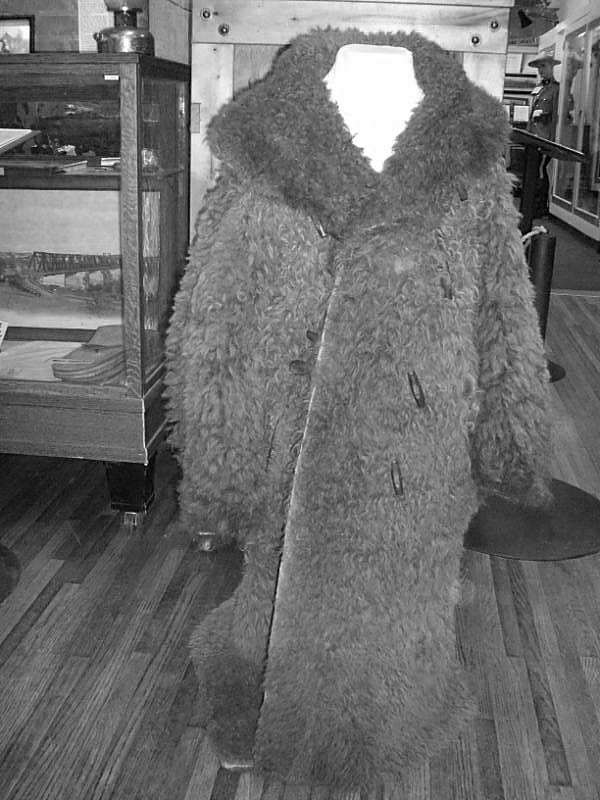by Joan Champ
“Will Make 50 to 60 Buffalo Coats Per Week; One Thousand Ordered From P. A. Fur by Burns & Co.” This headline in the June 30, 1938 issue of the Prince Albert Daily Herald announced that the Prince Albert Fur Company was the successful bidder on a contract with Burns and Company Ltd. to make 1,000 buffalo coats.
I was surprised to read this. I have seen several buffalo, or bison-hide, coats in museums, including the Prince Albert Historical Museum. I knew that the North West Mounted Police (NWMP), later the Royal Canadian Mounted Police (RCMP), had worn buffalo coats from the 1870s until about 1900, when plains bison had largely died out. I had no idea they were still being manufactured in the 1930s, so I decided to do some digging.
It turns out that the manufacture of buffalo coats was revived in the 1930s, thanks to the Canadian government. In 1909, the government had created in Buffalo National Park near Wainwright, Alberta, for the express purpose of protecting and regenerating the almost extinct plains bison. The original herd – probably the last in existence at the time – was made up of about 700 bison. By 1933, that herd numbered in the tens of thousands.
As the animal numbers outgrew the national park’s limited space, the government started transferring bison to other parks, including Wood Buffalo National Park in northeastern Alberta. The national parks also began an annual slaughtering program. During the 1930s, about 1,000 bison were killed in an annual cull, with their meat going to processing plants such as Burns and Company in Prince Albert.
As bison hides accumulated, Burns in turn contracted the PA Fur Company to make the buffalo coats. Burns then distributed the coats to retail outlets and to the RCMP and city police forces across Canada during the 1930s.
The PA Fur Company, located at 806 Central Avenue, was in business from 1929 to 1945. It had turned out 300 coats for the fall 1936 season, but the 1938 contract with Burns for 1,000 coats meant expansion. That year, the proprietor of the fur company, A. H. Sereda, informed the Herald that he would be hiring fifteen more employees, increasing his staff from five to twenty, to meet the demands of the new Burns contract.
Sereda stated that the manufacture of buffalo coats had undergone a significant improvement since the days of the NWMP, thanks to a tanning process utilized by the North Battleford Tannery “for the exclusive use of the Prince Albert Fur Company.” Known as “Chrome All-Weather-Proof Tanning,” this process made the buffalo coats three to five pounds lighter than the former coats, and rendered them weather proof and moth proof.
The return of the buffalo coat was welcomed by the RCMP for practical – and possibly nostalgic – reasons. “An interesting feature of the year,” the RCMP Commissioner’s Report for 1931 states, “has been the return to the force of the old-time buffalo coat for winter use, this having been rendered possible through the courtesy of the National Parks Branch of the Department of the Interior, which reserved for us seven hundred skins.”
The 1930s version of the buffalo coat closely resembled the pattern used by the North West Mounted Police. It had a large roll collar to protect the wearer’s neck. Four large leather straps down the front provided closure, each secured with two large regimental brass buttons.
The romanticism of the buffalo coats eventually wore off for the RCMP, however. While they were unquestionably warm, they were also incredibly heavy and cumbersome due to their bulk. The RCMP gradually phased out buffalo coats for winter wear, finally replacing them with greatcoats in 1961.
As a side note, it is interesting that Burns had a contract with the government to kill bison during the 1930s. Burns, which operated a large plant on the corner of Fifteenth Street West and Sixth Avenue West in Prince Albert from 1917 to 1976, normally processed meat from cattle and hogs raised in northern Saskatchewan. During the Great Depression years, bison meat must have supplemented the plant’s regular cattle and hog business.

Thanks to the Bill Smiley Archives for its assistance in the preparation of this column.
Contact: joanchamp@shaw.ca


